Born and raised in the small Iranian city of Sari surrounded by the Alborz Mountains and the Caspian Sea, architect Nastaran Mousavi grew up appreciating the vast differences between the rich natural landscape and the heavily populated city. With a houseful of architects, it’s no surprise that it’s the career she landed on as well. Mousavi earned her undergraduate degree in Architectural Engineering from the University of Tehran before moving to the United States in 2011 to study for a Master of Architecture degree at the California College of the Arts (CCA). She remained in San Francisco after school and co-founded Studio BANAA, an architecture practice focused on innovative urban infill and adaptive reuse projects for real estate developers, local businesses, and community organizations. The firm is also a certified Woman-Owned San Francisco Local Business Enterprise (Micro LBE). Over the years, Mousavi has taught architecture for the Young Artist Studio program and undergraduate students at CCA, while also acting as a guest reviewer at Academy of Art University, CCA, and UC Berkeley. Today, she joins us for Friday Five to share places, designs, and things that inspire her.
1. Mazandaran
I grew up in a small but dense city in the province of Māzandarān. This chunk of land in Northern Iran is unique in many ways. It is bounded on one side by the Caspian Sea, and by the Alborz mountain ranges on the other. Through the history of Iran and the many invasions it has undergone, this land has remained majorly intact due to its geographical setting. The language (now considered a dialect – Tabari) and the culture remain mainly untouched and unaltered. The fertile lands close to the sea and the giving and rich forests along the mountains made this jewel a diverse ecosystem. My life has been split between the dense urban setting of my hometown and the rich, lavish setting of villages where my farmer relatives lived. The juxtaposition of these two very different lifestyles have always raised a question in my head on which lifestyle is really better for us and our planet? I continue my obsession with villages and micro-living and anywhere I go, my first pick is to visit a village. I believe that’s where you really learn about an ethnicity, their culture, art, and way of living. Where globalization and industrialization are ruining all these unique and rich pieces of land and their culture.
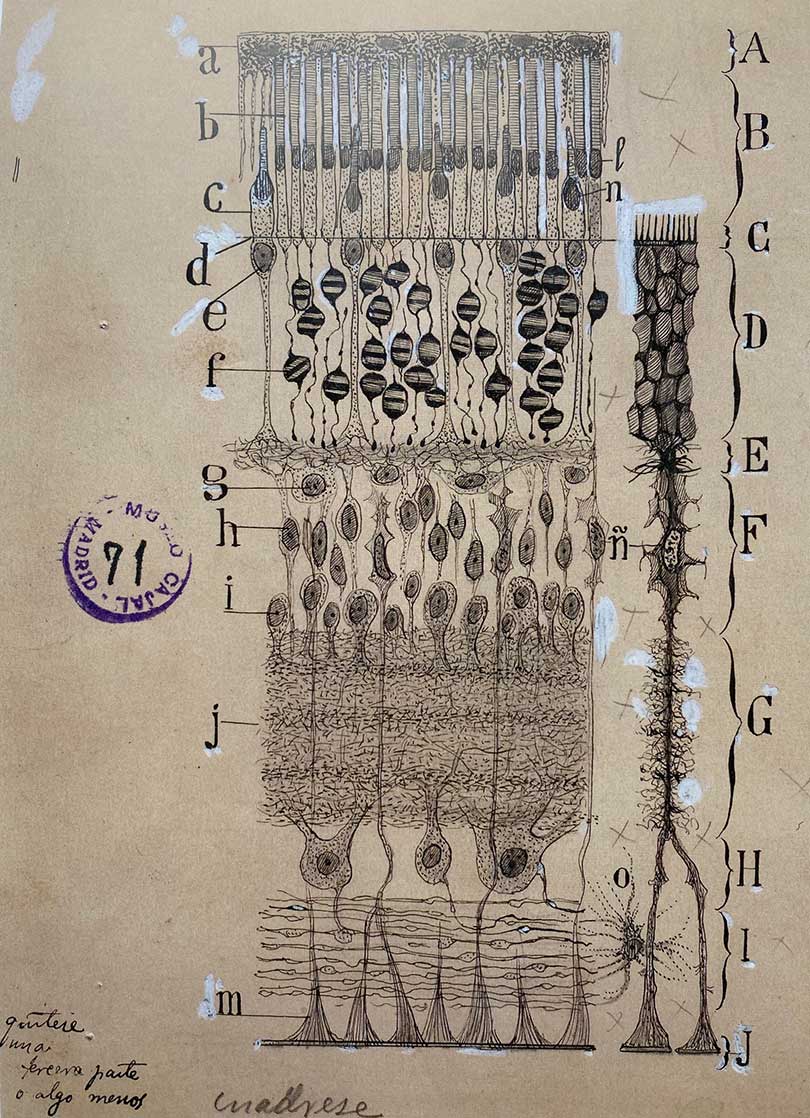
From the book: “The Beautiful Brain: The Drawings of Santiago Ramon y Cajal” \\\ Photo taken from book: Nastaran Mousavi
2. Brain Cells, biological microscopic forms/geometry in nature
One of my biggest inspirations is natural forms, especially the microscopic ones. I dig deep in those and love to study their structure and materials. I’m obsessed with collecting books that depict natural forms and compositions. There is something in nature that we as human beings have not yet been able to realize and replicate. Compositions that work so perfectly in terms of color and structure, functions that are harmoniously creating an ecosystem that’s self-sufficient and works on its own.

Tala Madani, Projections, 2015. Oil on linen, 80 x 98 1/4 x 1 3/8 inches. Courtesy the artist; David Kordansky Gallery, Los Angeles; and Pilar Corrias Gallery, London \\\ Photo: Josh White
3. Tala Madani
I became familiar with Tala Madani’s work at multiple museums in the US and Japan. She’s an Iranian-born American artist and her art has a satirical theme. Her sketchy but exaggerated style through which she describes delicate relationships between people and themselves and their body, some things you might not see or touch on in everyday life are very inspirational to me. It’s always a discovery process looking at her work, which is what I like!
4. Handwoven Rugs
I come from a world of rugs, and I’m obsessed with them. Every time I travel home, I bring at least one rug back with me. I sometimes spend hours sitting on my rugs at my apartment, and it just takes me all the way back to Iran and to my childhood memories. All the effort and thought behind creating these masterpieces are invaluable. From Gabbeh to Farsh to Gilim and Namad, there are thousands of years of history, culture, art, and heritage in these pieces. I can’t get enough of them.
5. Locally Crafted Jewelry
I am not a jewelry designer or maker in any way, but I sure am a collector. I am particularly interested in jewelry made by indigenous people from all over the world. It is a type of art that really comes from people and is something that I feel should not be “designed” in the contemporary term. Any place I travel to, I try to buy jewelry from local artisan markets, where the opportunity is given to local and indigenous people to showcase their arts and crafts, not from fancy museums. One of my favorite jewelry makers is mim accessories, an online jewelry store founded by Maryam Moqisé from Iran. What I love about her mission is that she collaborates with indigenous women from different tribes of Iran (Balochi women in particular), using their craft such as Suzan Duzi (embroidery) and weaving to create authentic handmade jewelry. Suzan Duzi is a crafting technique carried over for hundreds of years amongst the Iranian tribes using natural dye to create vibrant fabrics.
Work by Nastaran Mousavi:
Voyager The Square
This kiosk for Voyager had to be built in just 45 days. But not only that, being a small space within a much larger one at San Pedro Market in San Jose required creative solutions for brand visibility and ease of use in a high traffic area. Challenge, accepted. We positioned most of the glass windows to overlook the street and created a round bar that would stop people in their tracks from any angle (long enough to smell the coffee). Arched metal shelving echoes the broader context and colored triangular dowels shift and change with your line of sight – creating movement where there isn’t much space to move.
Zenrez
The fitness tech company, Zenrez, calmly sits on the cutting edge of a crowded industry. So, for us, the headquarters needed to harness that spirit and inspire its workers every time they jogged through the door. We designed the entire space – that sits within a historic building in downtown San Francisco – around a central piece we call the “spine” (no idea why). Curving and flowing through the center, it separates focus areas and collaboration spaces, while guiding people through the space. Inspired by Eastern philosophies at the heart of the brand, we kept the interiors full of light, air, ergonomic shapes, and hints of nature. Perhaps most importantly, we designed this space to grow as the company does – with the opportunity for more desk space and collaboration areas as needs change.
Mini Living
Finding new ways to house more people in a city of diminishing space, is a challenge that’s always on our minds. A Dezeen x MINI Living Future Urban Home competition asked us to consider how we will live in cities 100 years from now and propose an innovative solution for a “big life, small footprint.” We brainstormed hard, threw ideas at the wall, and worked with fellow architect and urban designer, Sarah Estephan, to consider how we could add density to a low-rise landscape. The crux of our solution was to create a self-contained mini village where work and play coexist, and space is shared like never before. We proposed utilizing backyard spaces as extra land lots to house more homes. And embracing rooftop gardens, close neighbors, small business hubs and affordable housing that feels modern, vibrant and community minded.
from WordPress https://connorrenwickblog.wordpress.com/2020/08/07/friday-five-with-nastaran-mousavi/
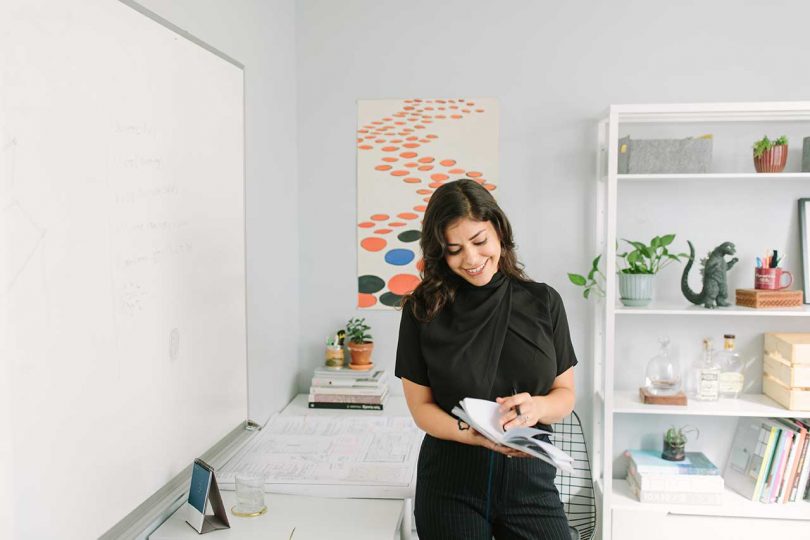
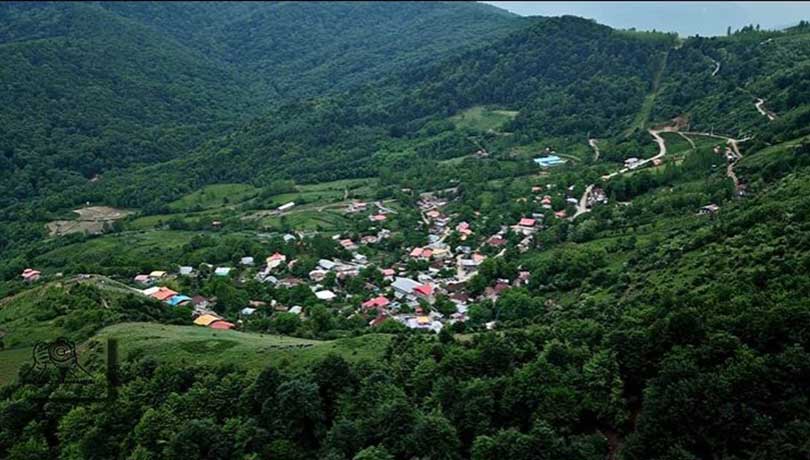

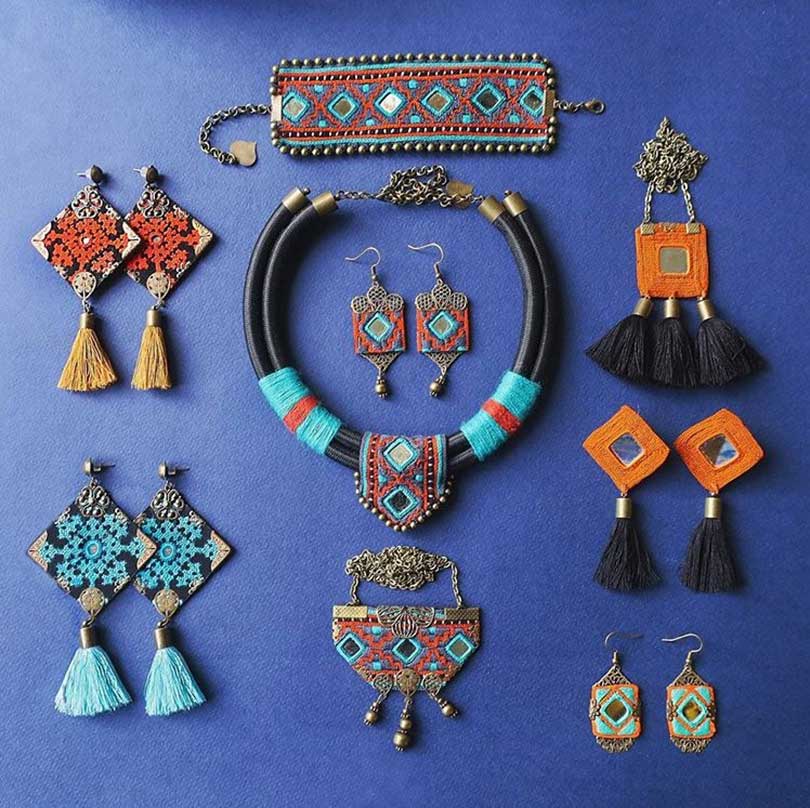
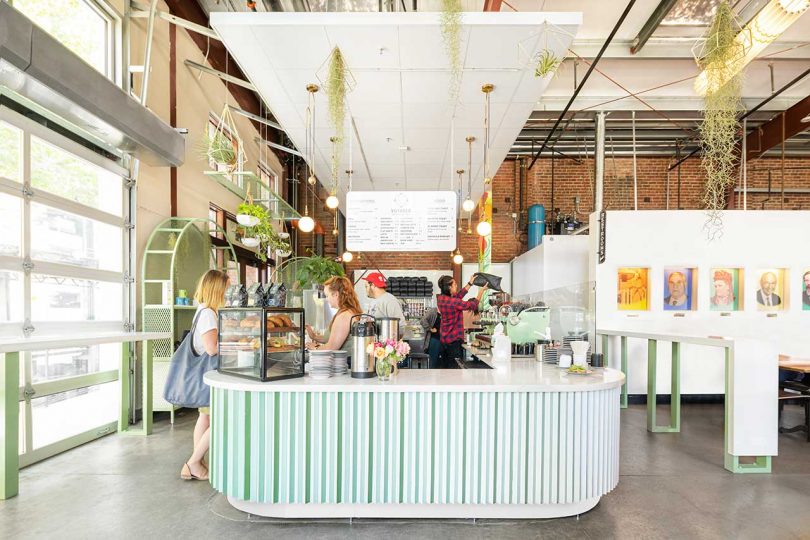

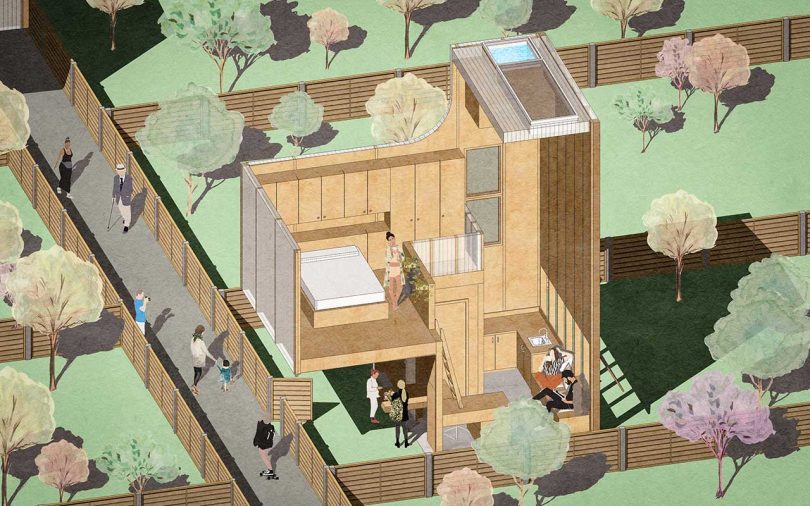
No comments:
Post a Comment